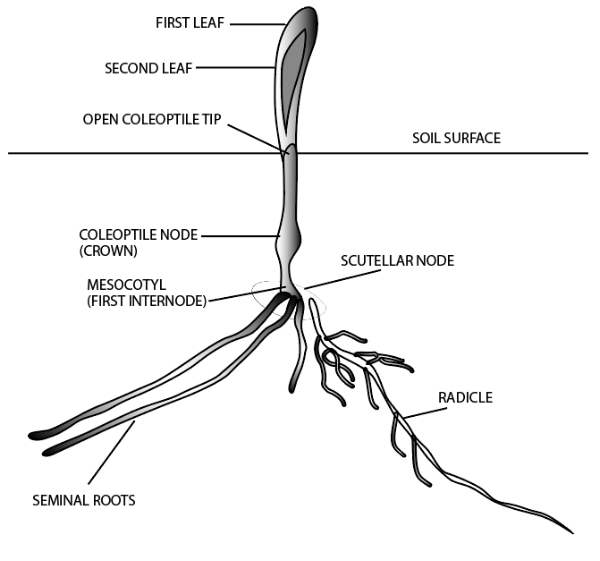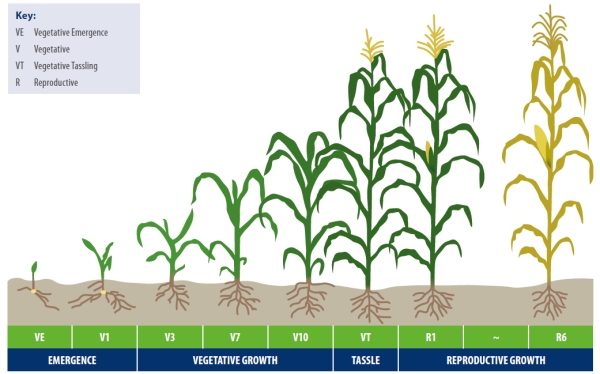Root Development and Nutrition
Maize is classified as a grass having a fibrous root system, rather than a tap root. The following explains root development in relation to nutrient uptake. Remember that factors such as weather, soil properties, fertiliser and pests can influence the growth, distribution and coordination of the root system within the soil.
Fun Fact
The total end-on-end root length can be up to 126,500 km per Ha!
Root development
Root development
Week 1: Germination
- The primary (radicle) root elongates and breaks through the seed coat.
- The coleoptile then surrounds the shoot before forming two to five seminal roots.
Week 2 - 3: The seminal roots
- The seminal root system anchors and absorbs essential water and nutrients for the developing plant. These roots will be taken over by the radicle root system.
- After the coleoptile and first leaves emerge from the soil during which time the radicle root system begins to develop from the crown.
- By approximately the third week the plant has reached the fourth leaf stage and total plant mass per hectare has roughly doubled from seed weight.
Week 6 - 8: Vegetative Growth
- The vegetatitve growth phase sees a large increase in root mass in the top profile of the soil.
Week 9 - 11: Tasseling and Reproduction
- At the point of tasseling, the plant has taken up approximately 75% of its nitrogen, 75% of its phosphate and 85% of its potash requirement. Growth is focused on cob development causing nutrient intake to slow. The plant starts to now produce grain over leaves.
Did You Know
There can be differences in root growth patterns between maturity groups. Maturity groups are greater than individual hybrids. Given similar growing conditions, a full season hybrid will produce a higher root mass and a corresponding higher yield potential.
Post Pollination
Post Pollination
Two to five weeks after pollination, from blister to full milk/dent the kernel fills rapidly and the balance of nutrient uptake occurs. The root system begins to senesce and die off. By the end of grain fill up to 40% of the root mass will have died. This is shown above ground level as the plant gets rid of 'excess baggage' as it nears maturity.
Three weeks from "black layer": Grain filling
Die-back continues as the plant channels photosynthate into developing grain. Almost no nutrient uptake occurs and there can be potash leaching as leaf tissue dies and if rain falls.


